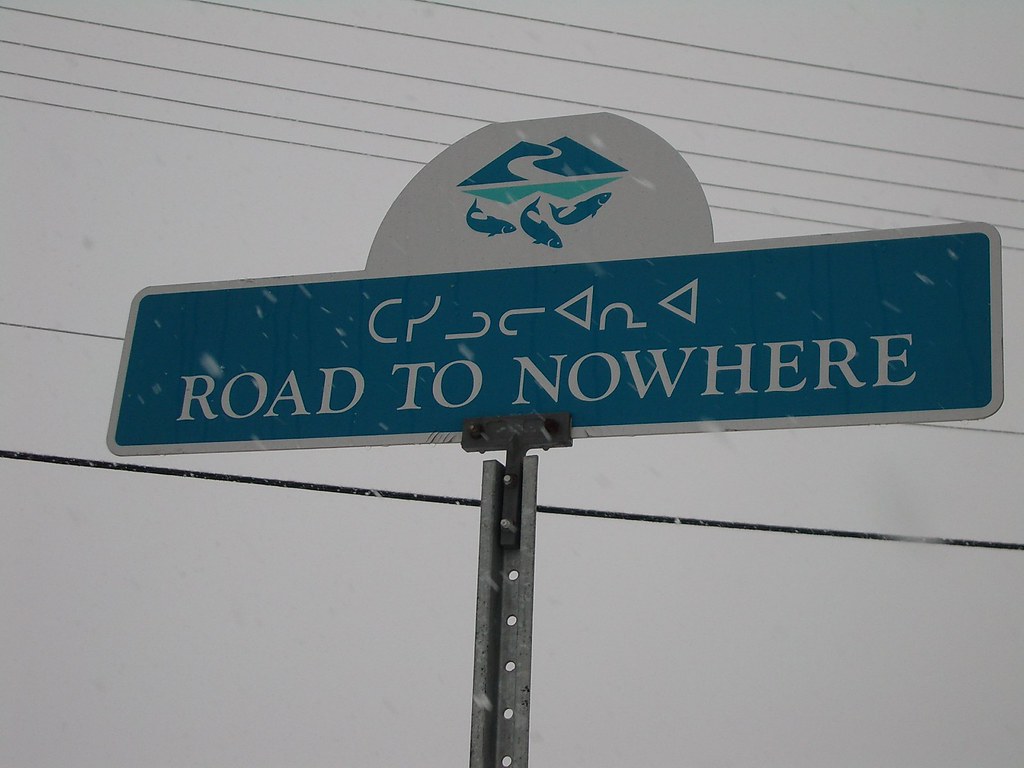It’s been quite awhile since I posted one of the recurring Odds and Ends articles. I had a bunch of small items to share, so why not? People seemed to like them. I considered that #12 must have been special because it was twelfth in line and Twelve Mile Circle liked to celebrate all things twelve, although honestly the number really had no greater significance. Readers who wish to see the previous eleven articles can always find them in the Complete Index.
Even Lower Clearance

I discovered a number of roads with particularly Low Clearances several years ago. Later I had the privilege of visiting one of those sites in person while traveling through western Tennessee, a road with an overpass only eight feet (2.4 metres) of clearance. I went several miles out of my way to chronicle the site. Obviously I had an affinity for such things.
Little did I know that an even lower overpass lurked practically in my own backyard and I’d passed within eyesight of it at least a hundred times. One of my regular bicycling routes through Washington, DC took me down the Capital Crescent trail sandwiched between the Potomac River and the historic Chesapeake & Ohio Canal heading northwest out of Georgetown.
Recently I’d noticed a parking lot at Fletcher’s Boathouse. Then, for some inexplicable reason, I began to wonder how cars got into it. The lot didn’t seem to have an obvious outlet to a road. Finally I spotted the exit a few days ago, perhaps because the trees didn’t have leaves yet, and saw an amazing sign out of the corner of my eye: “Tunnel Clearance 7 Ft” (2.1 metres). A tunnel beneath the C&O Canal let an access road connect to Canal Road (map). That’s how cars got into the parking lot. It felt tight even on a bicycle.
Comments on that earlier article implied even lower clearances (perhaps as low as 2 metres / 6.5 feet), nonetheless the Fletcher’s Boathouse tunnel was now the lowest automotive clearance I’ve seen in person.
Disputanta

I noticed a small settlement southeast of Petersburg, Virginia, oddly named Disputanta (map). There had to be a story. What kind of dispute would lead to Disputanta? I prepared to give it the full 12MC treatment as I rolled up my sleeves and started searching.
The story seemed tantalizingly good as it emerged. William Mahone built the Norfolk and Petersburg Railroad. Then he and his wife Otelia supposedly rode along the newly-opened tracks, naming stations in succession. She had been reading Sir Walter Scott’s Ivanhoe and suggested placenames based on the book. William agreed and a string of stations became Wakefield, Windsor, Waverly, and [Mc]Ivor. Then they ran out of worthy candidates and it led to a bit of a disagreement. They memorialized their tiff with Disputanta. The story probably wasn’t true although it sounded good.
Then I stumbled upon an article in the Virginia Pilot, What’s in a name? — Disputanta [link no longer works]. I’d been beaten by about four years and I couldn’t add anything to it. I hate it when that happens.
Coded Places

Has anyone been following the great comments on the recent article called Mike? I mentioned that Milwaukee’s IATA airport code, MKE, was used as a surrogate for the city name in certain circumstances. Readers Philip Newton, Rhodent and John Wood pointed out other examples – PDX (Portland, OR), LAX (Los Angeles, CA), RDU (Raleigh-Durham, NC), and OKC (Oklahoma City, OK).
That also got me thinking about different abbreviations and codes used in a comparable manner, including those that I’ve referenced on 12MC before. For example, Chicago’s 312 telephone area code was adopted by the Goose Island brewery for its 312 Urban Wheat, sparking similar land grabs by other breweries in different cities as in More Geo-BREWities. I’d also referenced the postal Zip Code made famous by a 1990’s television series in 90210: Myth and Reality.
I wondered if there were other abbreviations or codes used in a similar fashion.
Iqaluit’s Road to Nowhere

Iqaluit was the largest settlement and capital of Canada’s Nunavut Territory, with nearly seven thousand residents. I grew more curious about the city as I researched Sawtooth Elsewhere. Iqaluit offered a What to Do page on its website that included a “Road to Nowhere.” That was its actual name and the road truly led nowhere (map).
“Every city has its most famous road and ours is the Road to Nowhere. Most tourists want a picture under the road sign. If you’d like to actually experience the Road to Nowhere, you can hike or walk it year-round, ski it in the winter or drive in the summer. This scenic route will take you just outside of town on a winding road that goes by lakes, rolling hills and tundra until it eventually ends, in the middle of nowhere!”
I’d drive it if I ever visited Iqaluit. I did pretty much that exact same thing when I went “out the road” in Juneau, Alaska.

Leave a Reply